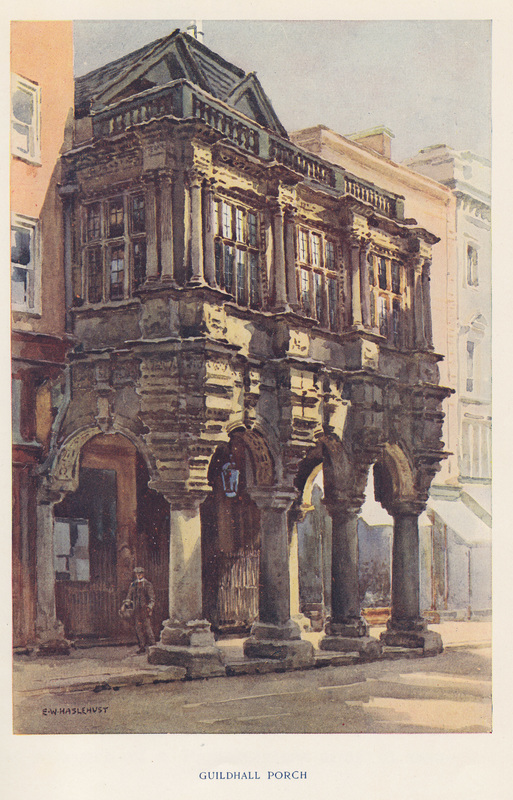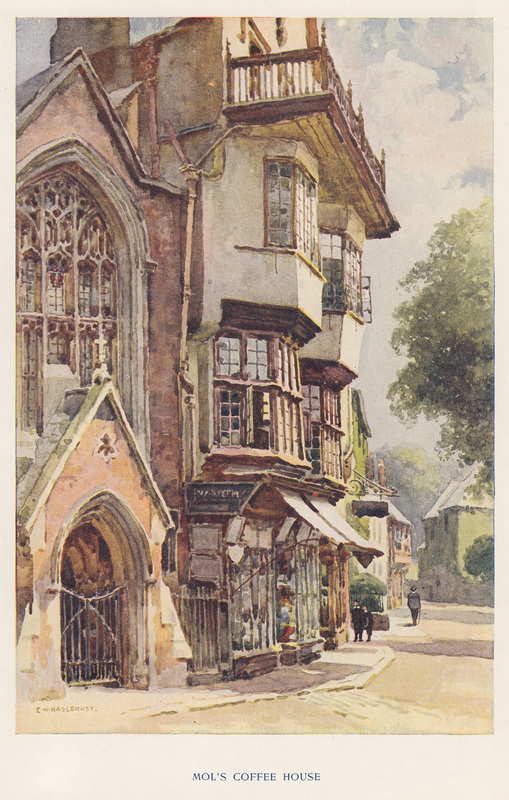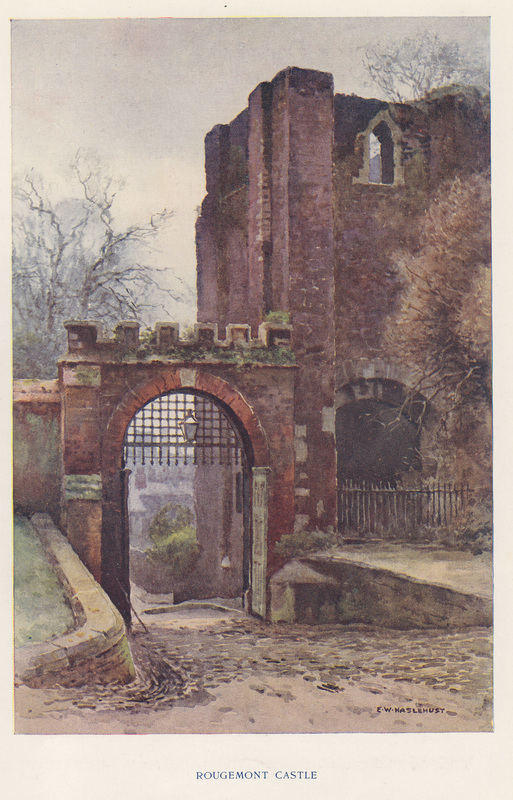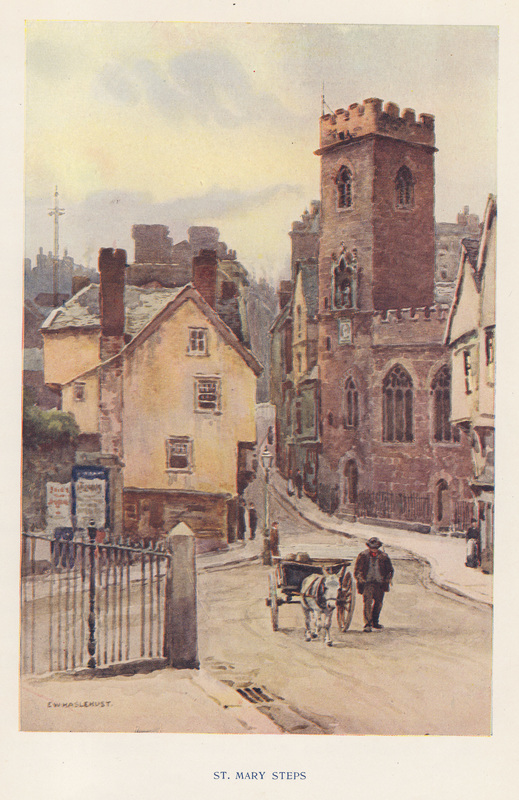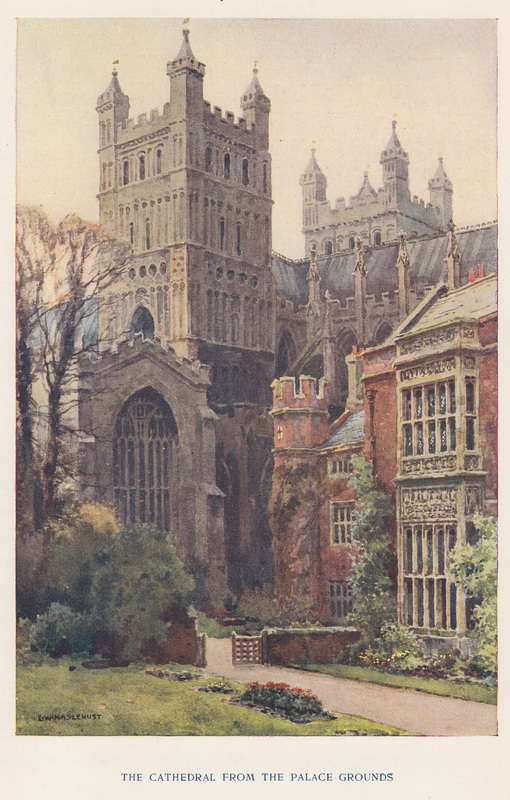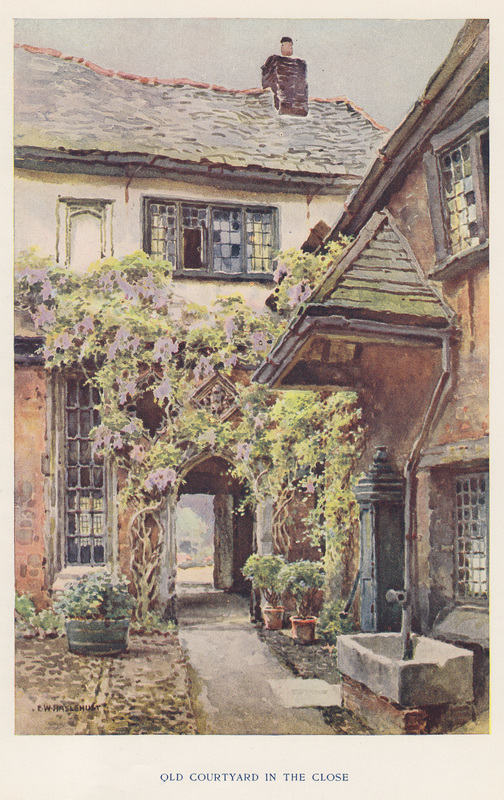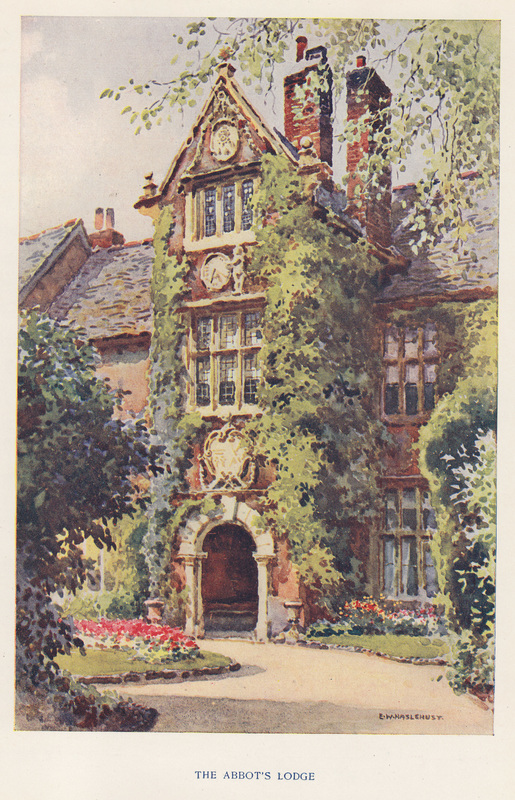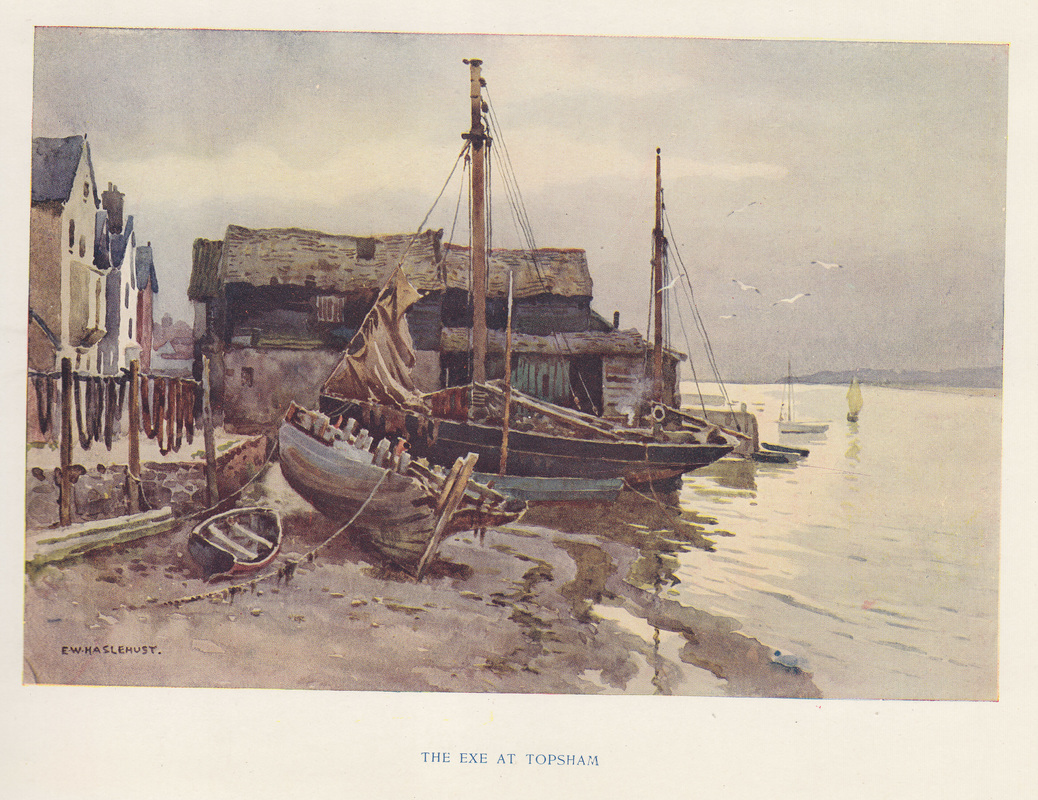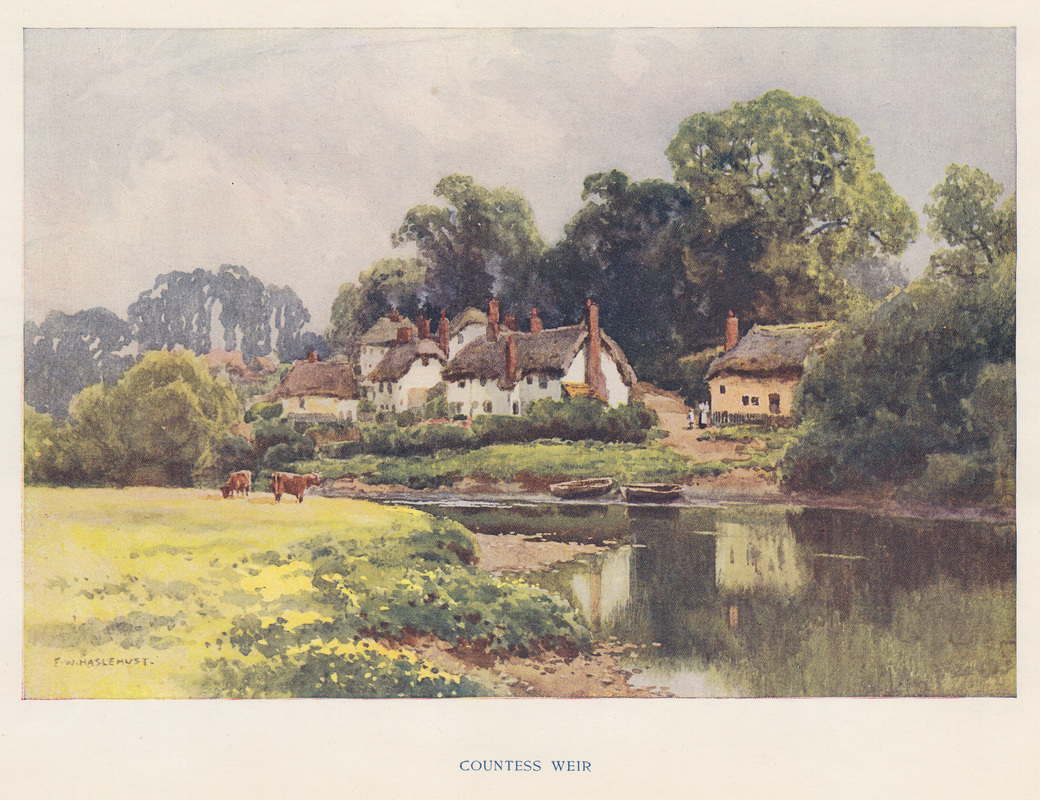Recently I came across these beautiful watercolours by Ernest William Haslehust (1866 -1949), which provide the illustrations for Sidney Heath’s book Exeter (London: Blackie & Sons, 1912.) Unlike many watercolours, these are full of deep shadow, strong contrast and vibrant colour. His paintings present a vivid sense of how these landmarks appeared just over a hundred years ago.
This 16th century building was originally used by the cathedral clergy but after the Reformation it was the Customs House, a haberdashery shop, a coffee house (1726-1829), and art gallery. From 1878 to 1958 it was known as Worth’s Gallery, being the premises of Thomas Burnett Worth and his son, who used the picturesque building for printing and selling guidebooks, postcards and other ephemera for tourists. Worth ensured that ‘Mol’s Coffee House’ became a tourist attraction itself, concocting various legends about its links with Queen Elizabeth and the Spanish Armada. It is currently an upmarket gift shop.
This is the view from inside the courtyard of Rougemont Castle, with the old gatehouse and entrance to Rougemont Gardens on the right: another scene that has changed little since Haslehurst painted it.
Here’s St Mary Steps Church, with West Street rising up in the background and the entrance to Stepcote Hill tucked away to the right. The famous ‘Matthew the Miller’ clock is clearly visible on the front of the church tower. The area to the left and behind the viewpoint was swept away for the construction of the Western Way bypass in the 1960s.
A lovely view of the cathedral, showing the bishop’s palace to the right. As I explained in an
earlier post, Bishop Phillpotts disliked the idea of living here and had his own residence built near Torquay. At the time of Haslehurst’s painting the palace was the home of the scholarly Bishop Archibald Robertson. The painting below looks like a courtyard behind one of the buildings in Cathedral Close.
Another pre-reformation building, this lodge also stood in Cathedral Close and was once the property of the Benedictine abbots of Buckfast. After the dissolution of the monasteries it passed to the Crown and then through the hands of lawyers and clergymen before becoming the home of the Choristers’ School headmaster. Both the lodge and the school were completely destroyed by a German bomb in May 1942.
I walked along this very stretch of water just two days ago and can confirm that little has changed: Topsham remains one of the most attractive spots on the Exe, with tangible evidence of its sea-faring importance all around. After the river became inaccessible to shipping higher upstream, Topsham became a prosperous port and the hub of the area’s maritime trade.
The closure of the River Exe to shipping was due to the construction of a weir in the 12th century. According to the story, this was at the behest of Isabella, Countess of Devon, which provides the derivation for the name ‘Countess Wear’ which is given to the area painted by Haslehurst below – although, like many such stories, the evidence and dates aren’t quite consistent. Behind the housing in Countess Wear the Exe meanders slowly, in long wide arcs, through flat grassy meadows that still provide grazing for cattle today, as well as being a popular route for cyclists and walkers.
